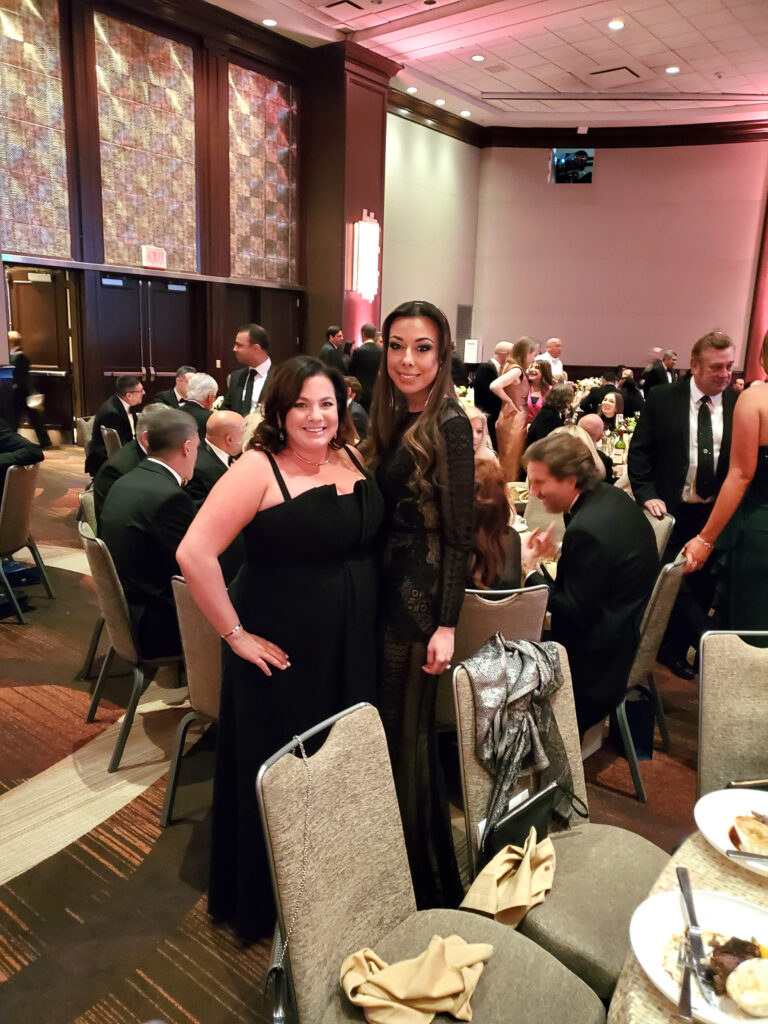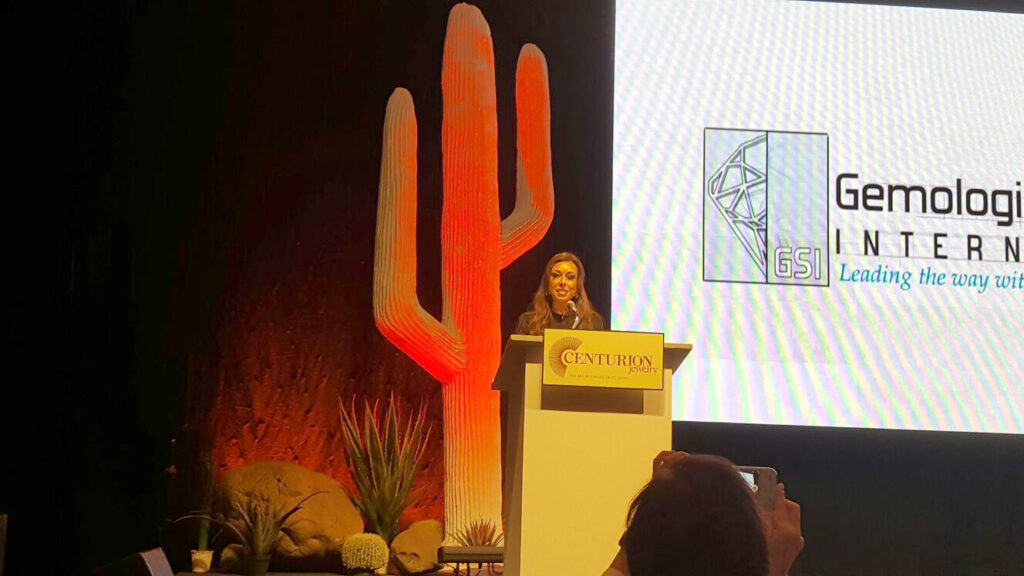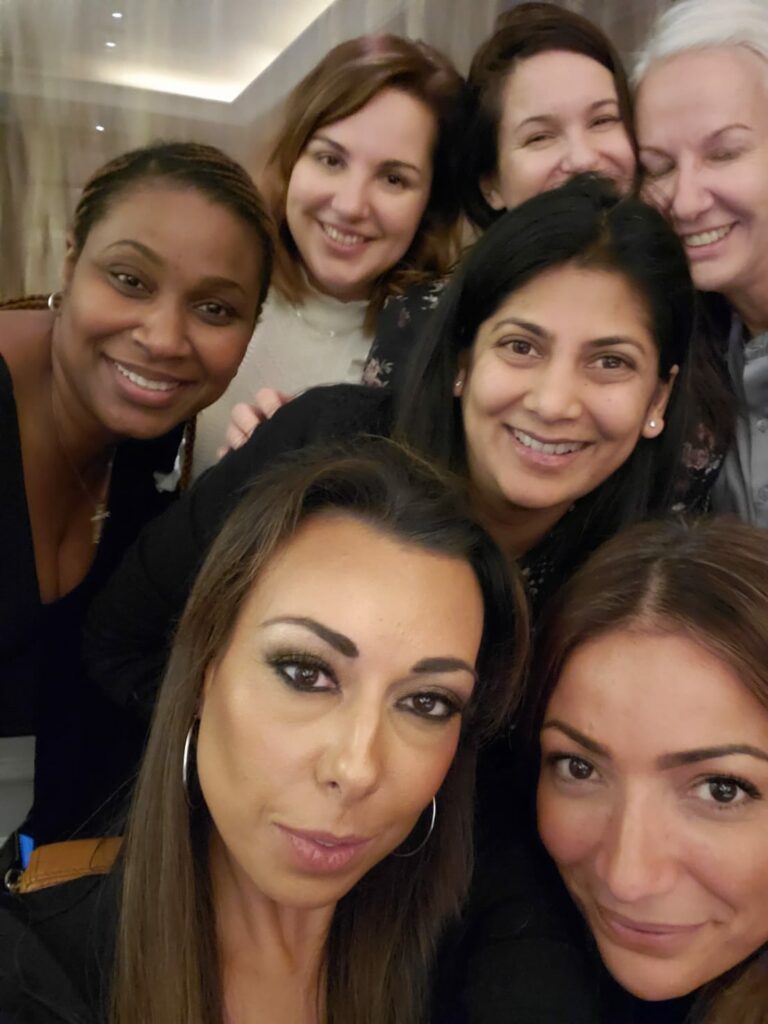A beautiful diamond is one of nature’s most mesmerizing creations. But how do you objectively judge the quality of the gem? The 4Cs – Cut, Color, Clarity, and Carat Weight – are the universal standard for doing this.

A Closer Look at the 4Cs
- Diamond Cut
A diamond’s beauty is largely determined by how well it is cut – the angles, size and workmanship of its facets and other parts. A well-cut diamond will reflect light back to the viewer in a dazzling display. These “finger fireworks” are one of the reasons a diamond is the perfect gem to symbolize love.
There are three important elements of cut:
- Brightness – Bursts of white light coming from the diamond.
- Fire – White light breaking up into the colors of the rainbow.
- Scintillation – Light and dark areas that move across the diamond when its position to a light source changes.
Many trade professionals consider Diamond Cut to be the most important of the 4Cs. Why? A small but well-cut diamond will sparkle, while a larger but poorly cut diamond will look flat. Pay extra attention to the quality of a diamond’s cut and its cut grade, which you’ll find on a GSI Diamond Grading Report.
- Color
Diamond color is graded on a scale that starts with the D (colorless) and ends with Z (a gem with an obvious yellowish or brownish color).

Diamond color is divided into five groups:
- Colorless (D–F): These diamonds are rare and prized.
- Near Colorless (G–J): These diamonds are so colorless that usually only a trained grader can tell the difference between them and Colorless diamonds.
- Faint (K–M): An untrained eye will have difficulty discerning the difference between Faint diamonds and ones with higher color grades.
- Very Light (N–R): An untrained eye can see subtle color differences in larger stones.
- Light (S–Z): You’ll be able to see shades of yellow or brown in diamonds of different sizes.
Light diamonds do not have enough color to be considered a fancy yellow or fancy brown diamond. Fancy colored diamonds have richer and brighter color – and are far more expensive.
GSI determines a diamond’s color by comparing it to a group of master stones whose color grades have already been established. Our expert graders view the diamond in controlled lighting conditions (light affects a diamond’s appearance) against the master stones to determine its color grade.
Fancy colored diamonds are gems that fall outside of the D-to-Z color scale are graded using other methods.
- Clarity
Although diamond is the hardest substance on the earth, most are affected by their violent journey to the earth’s surface and on the polishing wheel. These imperfections are called “clarity characteristics.”

Internal clarity characteristics are called “inclusions.” External clarity characteristics are called “blemishes.”
There are eleven Clarity Grades that describe the size and placement of inclusions and blemishes:
- Flawless (FL): Inclusions and blemishes are not visible under 10x magnification.
- Internally Flawless (IF): Inclusions are not visible under 10x magnification.
- Very, Very Slightly Included (VVS1and VVS2): A skilled grader has difficulties finding inclusions under 10x magnification.
- Very Slightly Included (VS1and VS2): A skilled grader can see minor inclusions with effort under 10x magnification.
- Slightly Included (SI1and SI2): A skilled grader can see inclusions under 10x magnification.
- Included (I1, I2, and I3): A skilled grader can easily see inclusions under 10x magnification. They are so significant that they may affect a diamond’s clarity and sparkle.
- Carat Weight
Diamonds are weighed in carats. One carat equals 1/5 of a gram (0.20 g). A carat is made of 100 points, just like 100 pennies make a dollar. So a 2.03 carat diamond weighs two carats and three points.

Accurately determining a diamond’s weight is essential. To find a diamond’s weight, GSI uses sensitive micro-balance scales.
GSI grading reports are an objective and accurate analysis of a diamond’s 4Cs.
Use them to make an informed and confident buying decision.
About The Author
 Debbie Azar is the Co-Founder and President of Gemological Science International (GSI), one of the largest gemological organizations in the world, and a distinguished leader in the global diamond and jewelry industry. As an executive with extensive knowledge of the jewelry and gem lab industries, her entrepreneurial skills and vision have helped GSI achieve rapid and continuous growth worldwide, establishing 13 leading-edge gemological facilities on four continents. She currently serves on the boards of the Jewelers Vigilance Committee, Responsible Jewellery Council, and Jewelers for Children, and is a member of the 24 Karat Club of New York. She has been featured in Forbes, Daily Mail, Good Morning America, Bloomberg, Bloomberg Businessweek, Fox Business, Fox5, CBS2, BOLDTV, Varney&Co, The Street, and NASDAQ, among others.
Debbie Azar is the Co-Founder and President of Gemological Science International (GSI), one of the largest gemological organizations in the world, and a distinguished leader in the global diamond and jewelry industry. As an executive with extensive knowledge of the jewelry and gem lab industries, her entrepreneurial skills and vision have helped GSI achieve rapid and continuous growth worldwide, establishing 13 leading-edge gemological facilities on four continents. She currently serves on the boards of the Jewelers Vigilance Committee, Responsible Jewellery Council, and Jewelers for Children, and is a member of the 24 Karat Club of New York. She has been featured in Forbes, Daily Mail, Good Morning America, Bloomberg, Bloomberg Businessweek, Fox Business, Fox5, CBS2, BOLDTV, Varney&Co, The Street, and NASDAQ, among others.











































